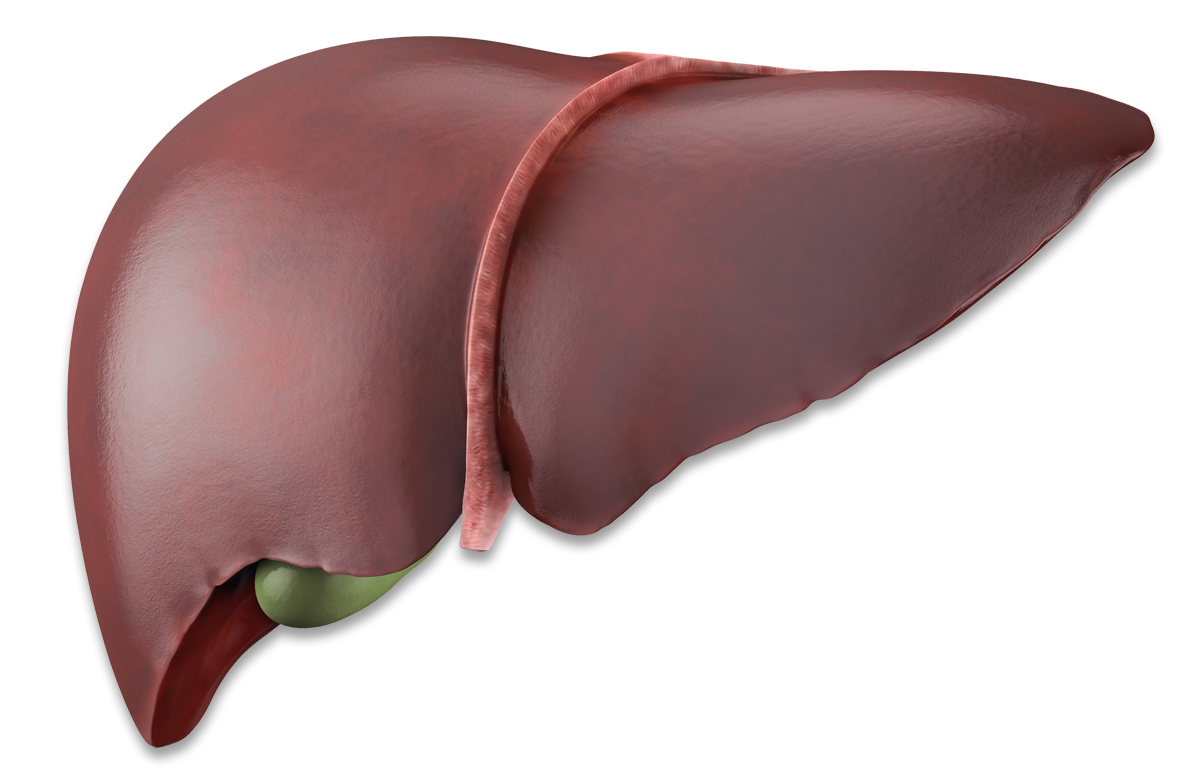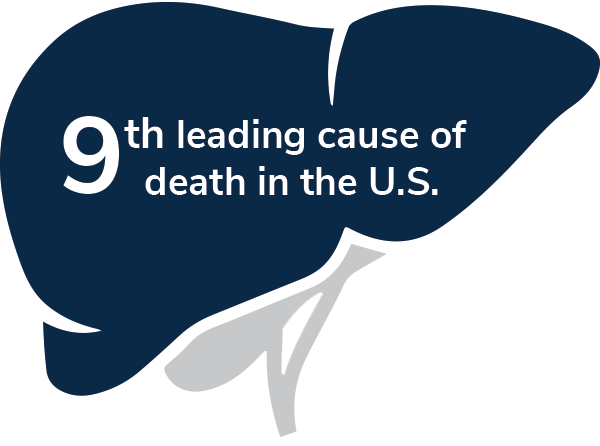Liver
What is the liver?
The liver is one of the largest and most complex organs in the body, located in the upper right-hand portion of the abdominal cavity, beneath the diaphragm, and on top of the stomach, right kidney, and intestines.
The liver has many functions that are necessary for life. The liver helps process carbohydrates, fats and proteins, and stores vitamins. It processes nutrients absorbed from food in the intestines and turns them into materials that the body needs, such as factors that the blood needs for clotting. It also secretes bile to help digest fats and breaks down toxic substances in the blood such as drugs and alcohol.

According to the American Liver Foundation, more than 100 million people in the U.S. have some form of liver disease – oftentimes undiagnosed;
4.5 million U.S. adults (1.8%) have been
diagnosed with liver disease.
In 2020,
51,642 adults in the U.S.
died from liver disease.
15.7 per 100,000 population
What is liver failure?
Liver failure means the liver is losing the ability to function, or is no longer functioning. Liver failure can develop slowly or rapidly, depending on the cause and the condition of the liver. The 2 types of liver failure are:
Chronic
The most common type of liver failure, which can take months or years to develop is a slow decline in liver function. This occurs as with cirrhosis, or severe scarring of the liver. Cirrhosis may be caused by excess alcohol intake, hepatitis, nonalcoholic fatty liver disease, bile duct diseases and various hereditary conditions. Over time, untreated cirrhosis lead to a decline in liver function and, ultimately, liver failure.
Acute
Acute develops rapidly, over days to a few weeks. This form of liver failure is rare and often happens in people who have never had previous liver problems. This could be caused by drug overdose, poisoning, viral/bacterial infections, or autoimmune disorders.
Liver Injury
This type of liver failure can be caused by injury to liver which results in loss of function. The liver can be damaged as a result of impact (for example, a motor vehicle crash) or penetrating trauma (such as a knife or gunshot wound). Injuries may range from relatively small collections of blood (hematomas) within the liver to large tears that go deep into the liver. Because the liver has many large blood vessels, the main problem resulting from liver injury is severe bleeding. Nearly all bleeding from a liver injury occurs within the abdominal cavity. Once stabilized, liver transplant may be the only option.
Treatments for Liver Failure
For chronic liver failure, patient can be managed with medications and diet modifications to help alleviate symptoms and repair the liver damage. However, some diseases are progressive in nature, and patients will likely progress to end-stage liver failure.
Liver transplantation is usually reserved as a treatment option for people who have significant complications due to end-stage chronic liver disease. According to the Centers for Disease Control and Prevention (CDC), 4.5 million Americans are living with diagnosed liver disease and 56,585 Americans die each year of chronic liver disease and cirrhosis. Its the 9th leading cause of death in the U.S.

Traditionally, allotransplantation (transplant from a human donor) is not a solution for everyone, and some patients may not qualify. Health insurers will only cover a transplant procedure if the recipient has been through a rigorous evaluation, and there is a high probability for success. The general consensus is to provide a liver transplant to those who would benefit the most. Some patients will not qualify due to advanced disease, financial limitations, or other social limitations that may jeopardize success of the transplant.
Liver allotransplant may also be a treatment option in rare cases of sudden failure of a previously healthy liver, but there is less time to coordinate all of the required steps for insurance approval. Doctors believe that xenotransplantation can be used as a “bridge” until a human donor organ becomes available, but it may also replace the human donor organ permanently. Given the fact that there is no approved modality for artificial liver support, the case for xenotransplantation is growing, and it could be a viable solution to the organ donor shortage.
Liver Disease Resources
Please visit these organizations for more information on liver disease and how to become an organ donor:



